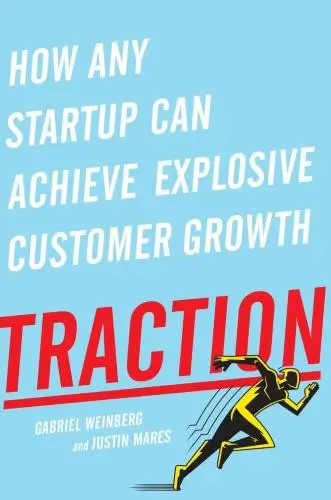Traction
How Any Startup Can Achieve Explosive Customer Growth
What's it about?
Traction by Gabriel Weinberg is a practical guide that pushes startups and businesses towards exponential growth. Through the exploration of the 19 traction channels, Weinberg provides actionable strategies to find the most effective path for customer acquisition. This book is a must-read for entrepreneurs eager to turn their vision into a reality, offering a mix of theory and real-world examples to demonstrate how to gain traction and scale your business successfully. It's an indispensable roadmap to marketing success.
About the Author
Gabriel Weinberg is the CEO and founder of DuckDuckGo, a privacy-focused search engine. He is an advocate for internet privacy, co-authoring "Super Thinking" and "Traction," which explore mental models and startup growth strategies, respectively. His work emphasizes data privacy, critical thinking, and efficient marketing techniques for scaling businesses.
10 Key Ideas of Traction
Leveraging Bullseye Framework for Focused Growth
The Bullseye Framework is a systematic approach to identify the most effective traction channel out of nineteen possible options.
It involves three concentric circles where the outermost lists all potential channels, the middle highlights channels worth testing based on hypotheses, and the innermost circle focuses on the channel(s) that will move the needle for growth.
This method ensures resources are not wasted on ineffective strategies and helps in quickly identifying the most impactful avenues for scaling.
Learn DeeperIdentify Your Traction Channels: Start by listing all nineteen traction channels. These can include content marketing, social media, email marketing, search engine optimization (SEO), and more. Don't limit yourself; the goal is to consider every possible avenue at this stage.
Formulate Hypotheses: For each channel, develop a hypothesis on why it could be effective for your specific business or project. Consider your target audience, your product or service's unique value proposition, and the resources you have available.
Prioritize and Test: Select the top three to five channels that seem most promising based on your hypotheses. Design small-scale tests to run in each channel. This could involve launching a targeted ad campaign on social media, sending out a series of emails to your list, or creating SEO-optimized content for your website.
Analyze and Focus: After testing, analyze the results to see which channel(s) had the highest impact on your growth metrics. Focus your efforts and resources on these channels, optimizing and scaling up your activities to maximize growth.
- Example
A startup focusing on eco-friendly products might identify social media, influencer partnerships, and content marketing as potential traction channels. They hypothesize that their target audience is highly engaged on Instagram and values authentic endorsements from influencers they trust. Testing involves launching a series of Instagram campaigns with a small group of influencers and measuring engagement and conversion rates.
- Example
A B2B software company might consider LinkedIn advertising, content marketing through industry blogs, and direct sales as their top channels. They hypothesize that LinkedIn will allow them to target decision-makers in their industry effectively. Testing could involve setting up a LinkedIn ad campaign targeting specific job titles within their target industries and creating a series of in-depth blog posts addressing common challenges those industries face.
Harnessing the Power of Content Marketing
Content marketing involves creating and distributing valuable, relevant, and consistent content to attract and retain a clearly defined audience.
By providing useful information or entertainment, businesses can build trust with potential customers, improving brand awareness and preference.
This strategy supports SEO efforts, drives traffic, and can significantly reduce customer acquisition costs over time as the content continues to draw in users organically.
Learn DeeperIdentify Your Audience: Start by clearly defining who your target audience is. Understand their needs, challenges, and interests to create content that resonates with them.
Create a Content Calendar: Plan your content in advance. A content calendar helps you organize topics, manage publishing schedules, and maintain a consistent content flow.
Focus on Quality and Value: Ensure every piece of content you produce is high-quality, informative, or entertaining. Your goal is to provide value that keeps your audience coming back.
Optimize for SEO: Use relevant keywords, meta descriptions, and titles to improve your content's visibility on search engines. This increases organic traffic to your site.
Promote Your Content: Don't just publish your content and hope for the best. Use social media, email newsletters, and other channels to promote your content and reach a wider audience.
Engage With Your Audience: Respond to comments, questions, and feedback. Engaging with your audience builds community and trust around your brand.
- Example
A health and wellness blog creates a series of posts about nutrition, exercise, and mental health tailored to busy professionals. They use SEO strategies to rank higher in search results and share their content on LinkedIn and Twitter to reach their target audience.
- Example
A small e-commerce store specializing in eco-friendly products publishes how-to guides and articles on the importance of sustainable living. They optimize their content for search engines and share it through their email newsletter, driving traffic back to their site and building a loyal customer base.
Maximizing Outreach Through Public Relations (PR)
Public relations focuses on leveraging media and online platforms to craft and disseminate a company's message or story.
This can dramatically increase a brand's visibility and credibility when done correctly.
Crafting compelling stories that resonate with your target audience and pitching them to the right media outlets can lead to significant exposure, often at a fraction of the cost of traditional advertising.
Learn DeeperIdentify Your Story: Start by pinpointing what makes your company unique. What's your mission? How did your company start? Any challenges you've overcome? This narrative is what will resonate with both the media and your audience.
Research Relevant Media Outlets: Look for publications, blogs, podcasts, and social media influencers that align with your brand and have an audience that would be interested in your story. Make a list of these outlets and prioritize them based on their reach and relevance.
Craft a Compelling Press Release: Write a press release that succinctly tells your story, why it matters, and what makes it newsworthy. Include quotes from key team members and any relevant statistics to add credibility.
Personalize Your Pitch: When reaching out to journalists or influencers, personalize your communication. Mention why you think your story fits their platform and how it can provide value to their audience. Avoid generic pitches.
Leverage Social Media: Share your story on your company’s social media platforms. Tag relevant media outlets or journalists who might be interested in your story. Use hashtags to increase visibility.
Monitor and Engage: After your story is published, monitor its reach and engagement. Respond to comments and questions to keep the conversation going. Thank the outlet or journalist for covering your story.
- Example
A startup that developed an innovative water purification technology used their founding story, which was inspired by the founder's experience with water scarcity during a hiking trip, to pitch to environmental blogs and news outlets. Their story was picked up by a major environmental website, leading to increased brand visibility.
- Example
A small bakery that started offering baking classes to underprivileged children during the pandemic shared their story with local news channels and food bloggers. The heartwarming initiative caught the attention of a popular food influencer, who featured the bakery on their platform, resulting in a surge of community support and customers.
Unlocking Customer Acquisition with Social and Display Ads
Social and display ads allow for precise targeting based on demographics, interests, behaviors, and more, making them highly effective for reaching specific audiences.
By crafting engaging ad content and continuously optimizing campaigns based on performance data, businesses can efficiently increase visibility, drive traffic, and acquire new customers.
The scalability of these channels also means they can support growth at various stages.
Learn DeeperDefine Your Target Audience Clearly: Start by understanding who your ideal customer is. Consider factors like age, location, interests, and behaviors. This will help you tailor your social and display ads to reach the people most likely to be interested in your product or service.
Craft Engaging Ad Content: Your ad should grab attention and communicate value. Use high-quality images or videos, compelling copy, and a clear call-to-action (CTA). Test different versions to see what resonates best with your audience.
Leverage Targeting Options: Both social media platforms and display ad networks offer advanced targeting options. Use these to narrow down your audience based on the demographics, interests, and behaviors you identified. This ensures your ads are shown to those most likely to convert.
Monitor and Optimize Your Campaigns: Regularly check the performance of your ads. Look at metrics like click-through rate (CTR), conversion rate, and return on ad spend (ROAS). Use this data to tweak your campaigns, whether by adjusting your targeting, ad creative, or budget allocation.
Scale Your Efforts: Once you find a formula that works, consider increasing your budget gradually to reach more potential customers. However, continue to monitor performance closely to ensure that scaling up remains cost-effective.
- Example
A local bakery uses Facebook ads to target users within a 10-mile radius who have shown interest in baking and pastry pages. They create a video ad showcasing their best-selling cakes and include a special offer for first-time customers.
- Example
An online fitness coach runs display ads on health and wellness websites. They target individuals who have searched for workout plans or nutrition advice online. The ads feature client success stories and a free consultation offer to attract new clients.
Driving Engagement and Retention with Email Marketing
Email marketing remains one of the most cost-effective ways to engage with customers and keep them informed.
By segmenting email lists and personalizing messages, businesses can deliver relevant content that encourages recipients to take action.
Regularly analyzing open rates, click-through rates, and conversion metrics allows for the refinement of strategies to improve engagement and ultimately drive sales.
Learn DeeperSegment Your Email List: Start by categorizing your email subscribers based on their interests, purchase history, or engagement level. This allows you to tailor your messages more precisely, making them more relevant and engaging to each group.
Personalize Your Emails: Use the recipient's name and reference their specific interests or past interactions with your brand. Personalization goes beyond just addressing them by name; it involves crafting content that speaks directly to their needs or preferences.
Test and Optimize Subject Lines: Experiment with different subject lines to see which ones yield higher open rates. Keep them concise, intriguing, and relevant to the content of the email.
Monitor and Analyze Performance Metrics: Regularly check your email campaign's open rates, click-through rates, and conversion rates. Use this data to understand what works and what doesn't, allowing you to refine your approach over time.
Provide Clear Calls-to-Action (CTAs): Each email should have a clear objective and a corresponding CTA that guides recipients on what to do next. Whether it's visiting a website, making a purchase, or learning more about a product, your CTA should be straightforward and easy to find.
- Example
A clothing retailer segments its email list into categories such as 'Men's Apparel', 'Women's Apparel', and 'Sale Items'. They send personalized emails to each segment, highlighting products and offers relevant to their past purchases and browsing behavior.
- Example
A software company uses A/B testing to optimize their email subject lines, finding that including the recipient's first name and a sense of urgency (e.g., 'John, your trial ends in 3 days!') significantly increases open rates. They then adjust their strategy to incorporate these findings into future campaigns.
Deeper knowledge. Personal growth. Unlocked.
Unlock this book's key ideas and 15M+ more. Learn with quick, impactful summaries.
Read Full SummarySign up and read for free!
Traction Summary: Common Questions
"I believe that traction is a sign that your startup is taking off." This quote from Traction by Gabriel Weinberg perfectly encapsulates the essence of the book. Weinberg and co-author Justin Mares break down the 19 channels startups can use to gain traction, ranging from PR to social media to search engine marketing.
What had me hooked was the practicality of the strategies discussed, with real-life examples and actionable steps provided for each channel. The book not only delves into how to implement these tactics but also emphasizes the importance of measuring and iterating to find what works best for your specific business.
Overall, Traction is a must-read for anyone looking to grow their startup or business. Its straightforward approach and hands-on advice make it a valuable resource that stands out in the realm of entrepreneurship and marketing books.
Experience Personalized Book Summaries, Today!
Discover a new way to gain knowledge, and save time.
Sign up for our 7-day trial now.
No Credit Card Needed

Similar Books

$100M Offers
Alex Hormozi
Principles of Marketing, Global Edition
Gary Armstrong
The 100 Best Business Books of All Time
Jack Covert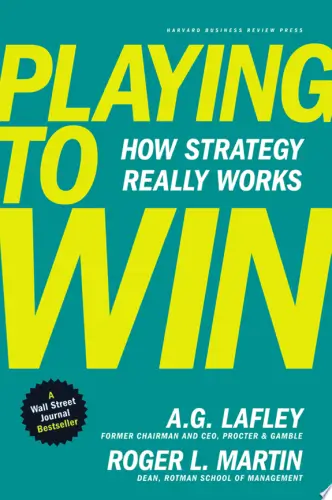
Playing to Win
A.G. Lafley
Productize
Eisha Armstrong
Start Your Own Pet-Sitting Business and More
Entrepreneur Press
The 22 Immutable Laws of Marketing
Al Ries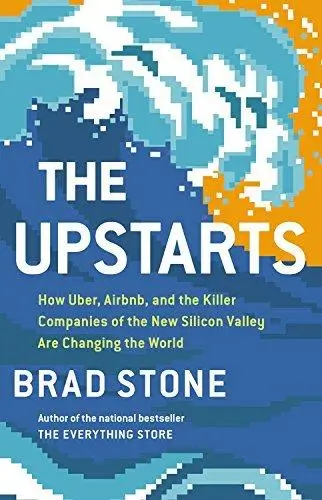
The Upstarts
Brad Stone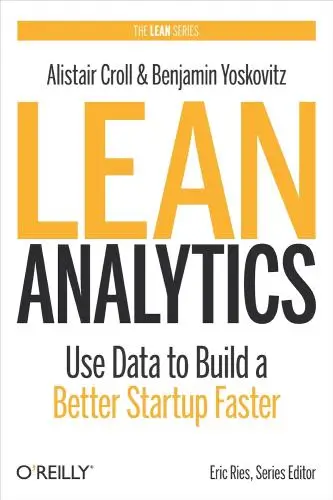
Lean Analytics
Alistair Croll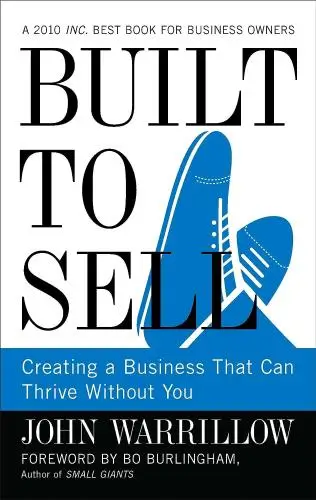
Built to Sell
John WarrillowTrending Summaries

Peak
Anders Ericsson
Never Split the Difference
Chris Voss
Smart Brevity
Jim VandeHei
The Psychology of Money
Morgan Housel
The First 90 Days
Michael D. Watkins
Atomic Habits
James Clear
Thinking, Fast and Slow
Daniel Kahneman
The Body Keeps the Score
Bessel van der Kolk M.D.
The Power of Regret
Daniel H. Pink
The Compound Effect
Darren HardyNew Books
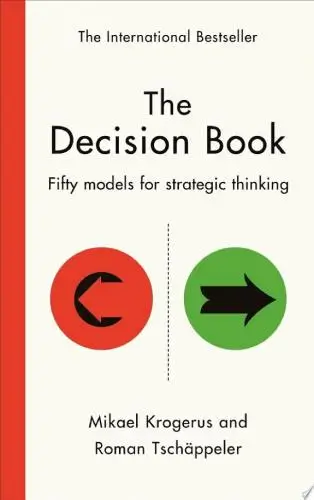
The Decision Book
Mikael Krogerus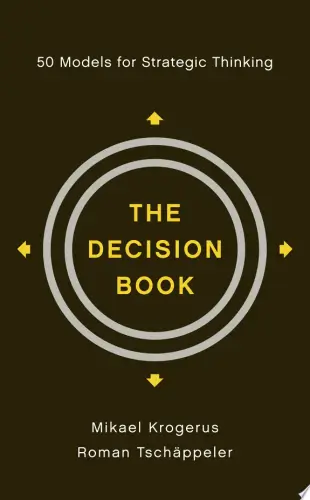
The Decision Book: 50 Models for Strategic Thinking
Mikael Krogerus
Fichte
Johann Gottlieb Fichte
Do No Harm
Henry Marsh
This is Going to Hurt
Adam Kay
This Is Your Brain on Joy
Earl Henslin
Learning Habits
Sarah Nicholl
TOP KNIFE: The Art & Craft of Trauma Surgery
Asher Hirshberg,
English Spirituality
Gordon Mursell
